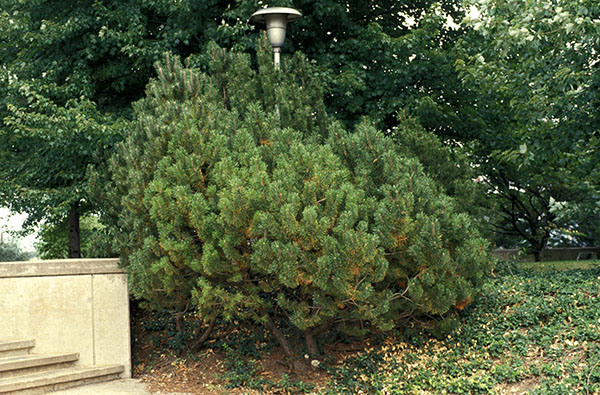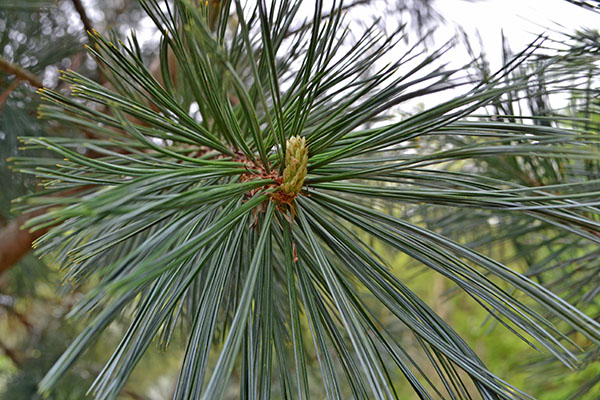Pinus mugo
Mugo Pine, Swiss Mountain Pine
Mountains of central and southern Europe from Spain to the Balkans
Very variable, prostrate or pyramidal; usually low, broad-spreading and bushy, at least the types available from nurseries.
Moves well balled-and-burlapped if root pruned; prefers a deep, moist loam in sun or partial shade; can be pruned annually to thicken plant and keep dwarf habit; very calcareous soil tolerant.
Two needle pine, with a variable growth habit; prostrate or pyramidal, ususually low, broad-spreading and bushy. Average dimensions are 15 to 20 feet in height by 25 to 20 feet in spread. Bark is gray, scaly, and spliting in irregular plates. Bark persists on old trunks. Leaves persist for five or more years, are rigid, curved, medium to dark green, 1 to 2 inches long,with finely toothed margins and a short apex. Basal sheath of leaves up to .5 inches long. Cones are subterminal, sessile or short stalked, erect, horizontal, or slightly pendulous, solitary or 2 or 4 together, ovoid or conical-ovoid, 1 to 2 inches long, andgrayish black at maturity. The species isn't as frequently used as the large selection of dwarf cultivars available. The species would make a good specimen tree.
medium to dark green
Buds are oblong-ovoid, .25 to .5 inches long, reddish brown scales encrusted with resin, scales closely appressed.
Brownish gray, scaly, split in iregular plates, but not scaling off on old trunks.
Monoecious.
Cones, grayish-black color at maturity.
Seed
'Amber Gold' - Compact, globose, slow-growing form with orange-yellow winter needles, green in summer.
'Aurea' - Semi-dwarf; light green needles turning bright gold in winter.
'Mops' - Dwarf globose form as tall as wide; considered one of the better forms.






